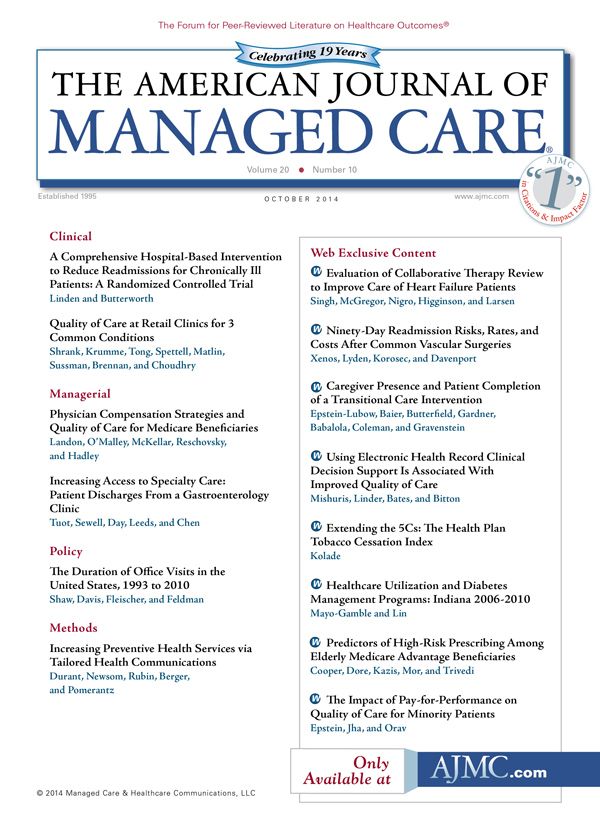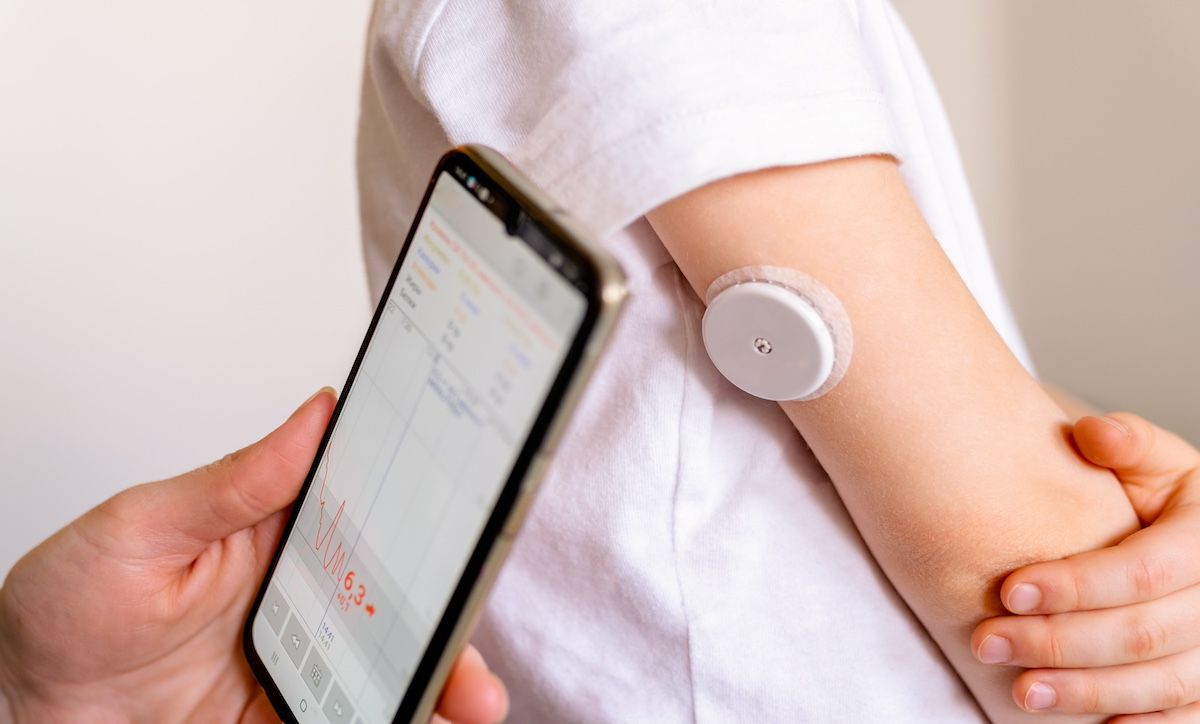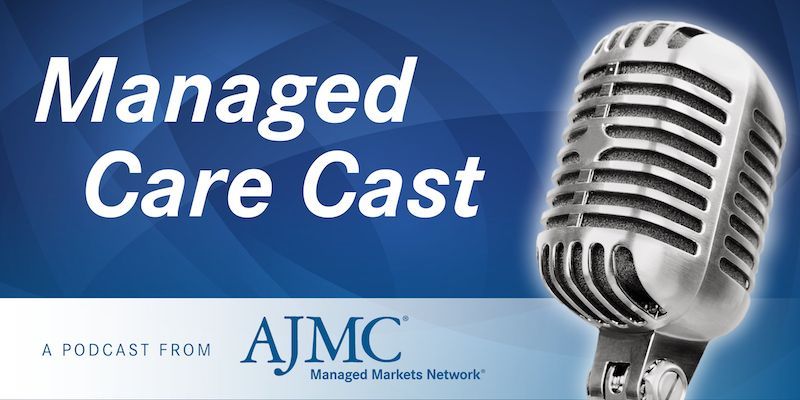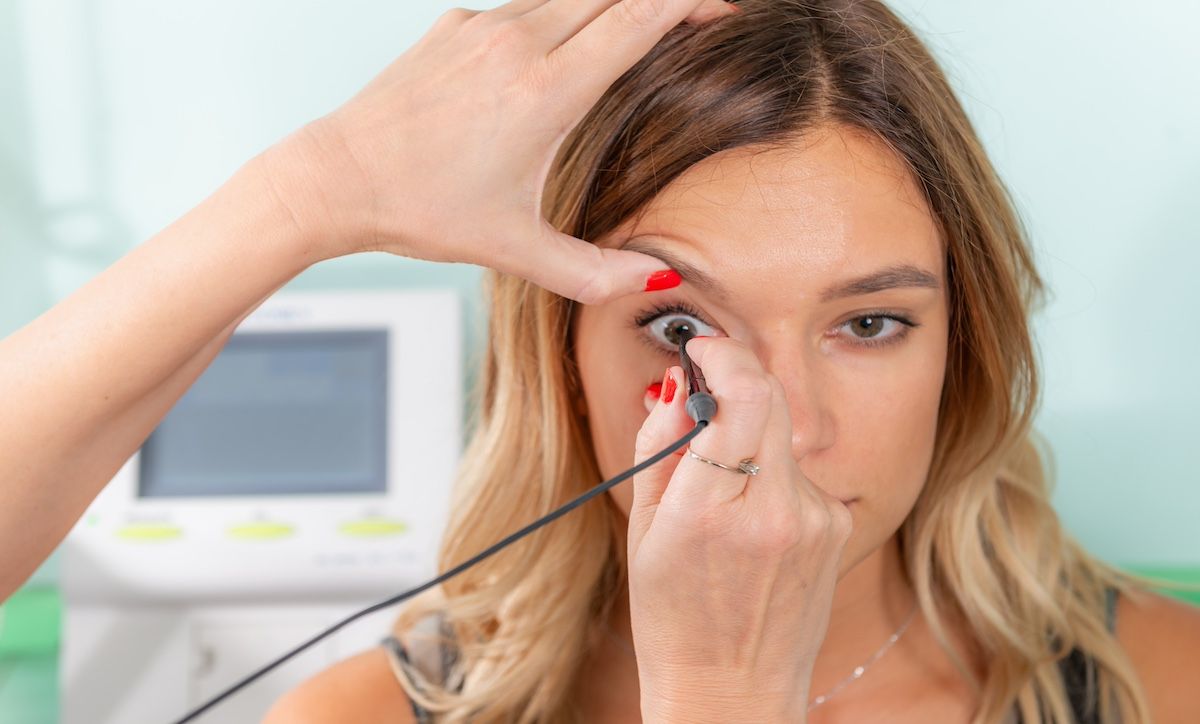Publication
Article
The American Journal of Managed Care
Healthcare Utilization and Diabetes Management Programs: Indiana 2006-2010
This study identifies factors associated with seeking physician assistance and participating in a diabetes self-management class in patients with type 2 diabetes mellitus.
ABSTRACT
Objectives
Healthcare utilization and participation in diabetes management programs have shown to be beneficial to overall health in patients with type 2 diabetes mellitus (T2DM). To improve the effectiveness of healthcare activities on diabetes health outcomes, factors associated with healthcare activities such as physician seeking and participating in a diabetes management class need to be identified.
Design and Methods
A retrospective multi-year cross-sectional analysis was conducted. Data were collected using data sets from the 2006 to 2010 Behavioral Risk Factor Surveillance System Survey. A Poisson regression was conducted to capture the influence of predisposing, enabling, and need factors on the number of physician visits for diabetes. A logistic regression was conducted to capture the influence of the aforementioned factors on participation in a diabetes management class.
Results
Results of the Poisson regression indicate patients who were taking insulin, more frequently check for sores, or have hemoglobin exams, had made more physician visits (incident rate ratios = 1.34, 1.04, and 1.05, respectively; all P <.01). Results of the logistic regression indicate patients who were taking insulin or more frequently check for sores (odds ratio [OR] = 1.48, 1.37, 1.43, 0.74, 1.30, 1.07, and 1.06, respectively; all P <.01), were more likely to participate in a diabetes management class. Results also indicated patients who were male or married were less likely to participate in a diabetes management class (OR = 0.69, P <.05; OR = 0.81, P <.01 respectively).
Conclusions
Evidence supports sociological factors as important facilitators promoting healthcare utilization in patients with increased T2DM severity levels. Interventions to improve healthcare utilization should acknowledge sociological factors, particularly self-care factors.
Am J Manag Care. 2014;20(10):e461-e468
- Based on the findings of this study, sociological factors are important facilitators in promoting healthcare utilization, particularly in patients with increased severity levels of type 2 diabetes mellitus.
- The findings from this study show particularly strong associations between self-care factors and diabetes healthcare utilization, such as seeking guidance from a physician and participating in a diabetes self-management class.
- Self-care activities should be encouraged by healthcare professionals, as they are strong indicators for participation in diabetes education and self-management programs.
Diabetes affects more than 25 million Americans.1,2 This disease continues to be a growing public health concern in the United States, including Indiana. The prevalence of diabetes has reached epidemic levelsincreaseing by almost 5% each year since 2000 and by over 50% from 2000 to 2009.1-4 Type 2 diabetes mellitus (T2DM) accounts for more than 90% of individuals diagnosed with diabetes.3,4 In 2010, an estimated 9.3% of adults in Indiana reported that they had been diagnosed with diabetes, exceeding the US diabetes prevalence of 8.3%.1,2,4,5
Self-care is an important element of any diabetes treatment plan. Studies have addressed the importance of diabetes self-care activities6; however, limited research exists on the impact of self-care activities on utilizing such beneficial healthcare services as diabetes management programs. To improve the effectiveness of healthcare utilization in T2DM patients in Indiana, and to gain knowledge about why such patients may choose it, it would be valuable to identify factors associated with healthcare utilization activities. This study identifies factors associated with patients with T2DM choosing to 1) seek physician assistance, and/ or 2) participate in a diabetes self-management class.
METHODS
We implemented a retrospective multiyear cross-sectional study to identify factors associated with 2 forms of healthcare utilization in patients with T2DM. This study tests 2 hypotheses: 1) the number of times a patient with diabetes seeks physician assistance is determined by need, enabling, and predisposing (including behavioral) factors; and 2) patients who participate in self-care activities are more likely to participate in a diabetes management class.
Conceptual Framework
Figure
The Andersen model of healthcare utilization, widely used for characterizing factors that lead to healthcare utilization provided the conceptual foundation for the hypotheses. It measures the impact of sociological determinants of healthcare utilization rates and consumption of medical resources in addition to genetic and need factors.7 In this model, healthcare utilization is influenced by factors in 3 categories: predisposing characteristics (age, sex, race), enabling/inhibiting factors (employment status, health insurance status, income level, education level, marital status), and need for care (insulin dependence, eye status, perceived overall health status, stroke).8,9 The shows predisposing characteristics, enabling factors, need, and the introduction of a fourth category entitled self-care factors. Self-care includes a range of activities such as self-monitoring of blood glucose and going to the doctor to have one's feet checked.8 Literature suggests self-care as key to overall diabetes management.10
Numerous studies have discussed the factors that are barriers and catalysts for self-management and self-care. 6,10-13 However, there is little research on the role of self-care factors in choices made about healthcare utilization, such as seeing a physician and participating in a self-management class. Therefore, this study has included, as a factor, the category of self-care practices in which diabetes patients currently participate, including glycemic control, glucose self-monitoring, checking glycated hemoglobin (A1C), and monitoring for physical changes (sores) that can indicate diabetes complications. Covariates were selected based on relevance to categories defined by Andersen’s model and literature on T2DM.
Study Sample
This study used the Behavioral Risk Factor Surveillance System (BRFSS) to analyze healthcare utilization among Indiana residents with T2DM. A collaborative project of the CDC and the 50 US states, the BRFSS is an ongoing data collection program designed to examine behavioral risk factors among adult populations. 14,15 Since interviewing each person is not feasible, a random sample is drawn in which all persons have a known chance of selection.14 To adjust for differences in probability of selection and nonresponse, and to obtain representative state population-based estimates, post stratification sampling weights in BRFSS were used in all statistical analyses in this study.15 The present study used data from 2006 to 2010 and included only Indiana residents (N = 3459, weighted N = 332,544). Study inclusion consisted of patients who responded “yes” to the BRFSS question, “Have you ever been told by a health professional that you have diabetes?” This study obtained exemption for data access to the publicly available BRFSS data sets from the Institutional Review Board of the authors’ institution.
Measurements
The dependent variables, recoded directly from the BRFSS data set, were 1) number of times a physician was seen for diabetes and 2) participation in a diabetes management program. These variables were responses to the BRFSS questions, “About how many times in the past 12 months have you seen a doctor, nurse, or other health professional for your diabetes?” and “Have you ever taken a course or class in how to manage your diabetes yourself?” Covariates were categorized based on the conceptual framework. The first category, predisposing factors, included age, race, and sex. Patients’ races were categorized as non-Hispanic white, non-Hispanic black, and other. Age was recoded into 5 categories (aged, in years, 19-30, 31-40, 41-50, 51-65, and >65); this categorization controls for the impact of T2DM every 10 years, with the exception being the group aged 51-65 years, which was categorized as 15 years due to the final cetegory, >65 years, being the age most affected by T2DM. Sex was included as a binary variable.
The second category, enabling factors, included education level, income level, employment status, marital status, and health insurance status. Education level was recoded from the BRFSS data set as no schooling, ≤high school diploma, or some college/college graduate. Employment status was recoded from the data set as do not work, employed for wages, or retired. Annual income level was recoded as <$25,000, $25,000-$50,000, or >$50,000. Marital status and health insurance status were included as binary variables.
The third category, need factors, included general health status, insulin dependence, stroke, and whether diabetes has affected the eyes. General health status was recoded as excellent, very good/good, or fair/poor. Stroke, insulin dependence, and diabetes’ effect on eyes were all included as binary variables.
The final category, self-care factors, included the number of times in the past 12 months A1C was checked, the number of times in the past 30 days glucose were checked, and the number of times in the past 12 months that a physician checked for sores. All self-care variables were included as continuous variables.
Statistical Analysis
Descriptive statistics on all outcome variables and covariates were obtained. A Poisson regression was used to capture the number of times a physician was seen for diabetes, while controlling for the aforementioned covariates.
The second step of the analysis used logistic regression to examine factors that influenced participation in a diabetes management class, while controlling for predisposing characteristics, enabling factors, need factors, and self-care factors. Stata version 13 was used to conduct all statistical analyses.16 Statistical tests were conducted using a .05 alpha level and a 95% confidence interval.
RESULTS
Table 1
A total weighted number of 3604 patients with diabetes, representative of 332,554 patients with diabetes in Indiana, were studied. outlines the descriptive statistics of the study population. A majority of the study population was male (52.97%), non-Hispanic white (85.74%), and aged between 31 and 40 years (40.13%). The mean number of times a doctor was seen for diabetes within the previous 12 months was 3.28 (SD = 0.10). Participants who had taken a diabetes management class within the past 12 months represented 61.32% of the study population.
Table 2
The first regression analysis was the Poisson regression conducted using the outcome variable, “Number of times a physician was seen for diabetes in the past 12 months.” These results, including the incident rate ratios (IRRs) and the 95% CIs of covariates, are shown in . The IRR for participants aged 51 to 65 years is 1.64 times higher than that for diabetics aged >65 years. Insulin dependence indicated an IRR 1.34 times higher than that for the non—insulin dependent. Likewise, the IRR for participants who self-reported race as non-Hispanic white is 0.22 times lower than that for non-Hispanic black, holding the other variables at constant. With each additional time a patient had his A1C checked or was checked for sores, there was an increased IRR in the number of times a physician was seen for diabetes (IRR = 1.05 and IRR = 1.04, respectively), holding the other variables at constant.
Table 3
The second regression analysis, logistic regression, was conducted using the outcome variable, “Participation in a diabetes management class,” in the last 12 months. These results, including the odds ratios (ORs) and the 95% CIs of covariates, are shown in . Results indicated that patients in the groups of individuals aged 19 to 30 years, 31 to 40 years, 41 to 50 years, and 51 to 65 years were more likely to participate in a diabetes management class compared with participants aged more than 65 years (ORs = 3.69, 5.27, 5.16, and 4.48, respectively; 95% CIs, 1.68-8.11, 2.44-11.40, 2.28-11.68, and 1.72-11.67, respectively). Participants who were insulin-dependent were more likely to participate in a diabetes management class compared with participants who were not insulin-dependent (OR = 1.82; 95% CI, 1.43-2.31). For each increase in the number of times a physician checked a participant for sores, they were more likely to participate in a diabetes management class (OR = 1.09; 95% CI, 1.04-1.14).
DISCUSSION
While previous studies indicate increased use of healthcare services after diagnosis of T2DM, this study provides evidence that sociological factors influence variation in healthcare utilization. Sociological factors were significantly associated with the number of times a physician was seen for diabetes and with participation in a diabetes management class.
The sociological factors associated with the number of times a physician was seen for diabetes were predisposing characteristics, need factors, and self-care factors. The predisposing characteristics associated with the number of times a physician was seen for diabetes included age and race; patients aged 51 to 65 years or who were non-Hispanic white, or fit both categories, were less likely to see a physician for their diabetes. These data indicate that an individual’s physician attributes makes them more likely to participate in a diabetes management program. In terms of age, the 51 to 65 year age group represents the group closest to the age group most affected by diabetes. These individuals are much more likely to seek physician assistance as result of diabetes severity. However, as indicated in the results, this finding suggests that during the 10 to 15 years prior to when diabetes affects patients the most, there is still a willingness to seek physician assistance.
Insulin dependence was the need factor associated with the number of times a physician was seen for diabetes. Patients who were insulin dependent saw a physician more often for diabetes. This indicates that individuals seeking physician assistance are either concerned with maintaining good health or seek physician assistance due to disease severity.
The self-care factors associated with the number of times a physician was seen for diabetes were the number of times a patient checked his A1C and the number of times the patient checked for sores. Self-care activities often include interaction with a physician. While this study does not measure patient outcomes resulting from physician interaction, it is clear that higher healthcare utilization, such as seeking physician assistance, can be predicted in patients who participate in self-care activities.
The sociological factors associated with participation in a diabetes management class were predisposing (age, sex, marital status), need (insulin dependence), and self-care (A1C check, sore check) factors. Compared with the reference group, >65 years, all other age groups were more likley to be associated with participation in a diabetes management class, which was consistent with previous studies that indicate age as a factor that is linked to the prevalence of diabetes.7,12,13 The present study provides evidence consistent with the literature that suggests individuals within target age groups for diabetes are more likely to participate in a diabetes management class. This finding should be considered when developing interventions geared toward diabetes management.
Marital status is negatively associated with participation in a diabetes management class. The literature suggests that compared with unmarried patients, married individuals with a chronic illness such as diabetes experience some protective factor against disease severity and mortality associated with disease severity. 17-19 Hence the present findings reflect consistency with previous studies on health and marital status, that married patients have a lesser need for a class geared toward diabetes management due to lower T2DM severity levels. However, overall, we found that men were less likely to participate in diabetes management classes than women.
The need factor associated with participation in a diabetes management class was insulin dependence. Patients who were insulin dependent were more likely to participate in a diabetes management class compared with participants who self-reported fair/poor health. The need factor suggests that patients with more severe diabetes are more likely to participate in a diabetes management class than individuals who perceive they have excellent health. Thus, diabetes management classes are likely options for patients with more severe diabetes than those who are not insulin dependent and who eyes have not been affected by the disease.
The frequencies of hemoglobin and sore checks were associated with increased participation in diabetes management classes. From this finding, we might extrapolate that T2DM patients who are currently taking steps to manage their disease are already likely to take a diabetes class, and thus may not be the target population for interventions.
Study Significance and Policy Implications
Diabetes self-management is an important component of successful health outcomes for diabetes patients. Determining the factors that will contribute to increased participation in such programs will help educators and medical professionals facilitate engagement in self-management programs. This study reveals the sociological factors which influence a patient’s likelihood of participating in such programs.
Several strong associations are of great interest, including the finding that increasing frequencies of A1C and sore checks is associated with greater likelihood of participation in a diabetes management class. These associations suggest that patients involved in self-care activities are also more likely to be involved in self-management.
Men, although they have prevalence rates for T2DM that are increasing more quickly than those of women, were less likely to participate in a diabetes management class than women. This should be noted by those who create interventions and recruiting efforts geared toward increasing participation in diabetes management classes. Categories strongly associated “number of times a physician was seen for diabetes” included number of times A1C was checked and “number of times a physician checked a patient for sores.” These variables suggest that patients who participate in self-care activities for T2DM may require physician assistance. This leads to increased healthcare utilization.
Sociological factors, especially self-care factors in which patients are already engaged, are important facilitators in promoting healthcare utilization in patients with increased severity levels of T2DM, and interventions implemented to improve healthcare utilization should take that into consideration. Our study focused on Indiana, but as the rate of T2DM increases and the average age of affected individuals decreases nationally, findings from this study can be used to inform national health policy perspectives.
Limitations
Limitations that must be considered include the exclusion from the BRFSS data set of households without telephones, which may result in a biased survey population due to underrepresentation of certain segments of the population. Also, the BRFSS data set contains self-reported information, which may be inaccurate due to recall bias, respondent bias, or interview bias. Finally, the data were collected from Indiana residents; therefore, the results may not be generalizable to other states. However, we believe the limitations do not outweigh the relative contribution of this study.
CONCLUSION
Our results support the acknowledgment of sociological factors, particularly self-care factors, as important facilitators in promoting healthcare utilization in patients with increased T2DM severity levels. Self-care factors are predictive of patient likelihood to seek physician assistance and/or participate in a diabetes management class. If physicians and interventions emphasize self-care factors, patients will be more likely to see a physician for their diabetes as well as participate in a diabetes management class.Author Affiliations: Department of Applied Health Science, School of Public Health, Indiana University, Bloomington (TLM-G, H-CL).
Funding Source: None.
Author Disclosures: The authors report no conflicts of interest to disclose.
Authorship Information: Concept and design (TLM-G, H-CL); analysis and interpretation of data (TLM-G, H-CL); drafting of the manuscript (TLM-G, H-CL); critical revision of the manuscript for important intellectual content (TLM-G, H-CL); statistical analysis (TLM-G, H-CL); and supervision (H-CL).
Address correspondence to: Hsien-Chang Lin, PhD, Indiana University, Department of Applied Health Science, 1025 E 7th St, Ste 116, Bloomington, IN 47405. E-mail: linhsi@indiana.edu.REFERENCES
1. CDC and National Diabetes Fact Sheet: National Estimates and General Information on Diabetes and Prediabetes in the United States, 2011. HHS, CDC; 2011.
2. Naranyan KMV, Williams D, Gregg EW, Cowie CC. Diabetes Public Health: From Data to Policy. New York: Oxford University Press. 2011.
3. American Diabetes Association. Diabetes Basics. Standards of Medical Care in Diabetes 2012. Diabetes Care. 2012;35 suppl 1:S11-63.
4. Indiana State Department of Health. Burden of diabetes in Indiana. http://www.chronicdisease.isdh.in.gov/. 2011.
5. Indiana State Department of Health. Diabetes in Indiana: a report on diabetes morbidity and mortality. Diabetes Control and Prevention Program. 2008.
6. Cauch-Dudek K, Victor JC, Sigmond M, Shah BR. Disparities in attendance at diabetes self-management education programs after diagnosis in Ontario, Canada: a cohort study. BMC Public Health. 2013;13:85.
7. Andersen RM. Revisiting the behavioral model and access to medical care: does it matter? J of Health Soc Behav. 1995;(13)1.
8. Agardh E, Sidorchuk A, Hallqvist J, et al. Burden of type 2 diabetes attributed to lower educational levels in Sweden. Popul Health Metr. 2011;9:60.
9. Clement S . Diabetes self-management education. Diabetes Care. 1995;18(8):1204-1214.
10. Toobert D, Hampson S, Glasgow R. The summary of diabetes selfcare activities measure: results from 7 studies and a revised scale. Diabetes Care. 2000;23(7):943-950.
11. von Wagner C, Steptoe A, Wardle J, Wolf MS. Health literacy and health actions: a review and a framework from health psychology. Health Educ Behav. 2009;36(5):860-877.
12. Lundberg C, Thrakul P. Type 2 diabetes: how do Thai Buddhist people with diabetes practice self-management? J of Adv Nurs. 2012;68(3):550-558.
13. Ramal E, Petersen A, Ingram K, Champlin A. Factors that influence diabetes self-management in Hispanics living in low socioeconomic neighborhoods in San Bernardino, California. J Immigr Minor Health. 2012;14(6):1090-1096.
14. HHS. Behavioral Risk Factor Surveillance System (BRFSS) Asthma Call-Back Survey, 2009. Ann Arbor, MI: Inter-university Consortium for Political and Social Research; 2012.
15. Behavioral Risk Factor Surveillance System. HHS, CDC; 2011.
16. Stata Data Analysis and Statistical Software. Stata website. http://www.stata.com/stata13/. Published 1996. Updated 2014. Accessed October 23, 2014
17. Cornelis MC, Glymour M, Kawachi I, et al. Marital status and risk of type 2 diabetes in the health professionals follow-up study. Circ. 2012;125:AP213.
18. Schwandt HM, Coresh J, Hindin MJ. Marital status, hypertension, coronary heart disease, diabetes, and death among African American women and men: incidence and prevalence in the Atherosclerosis Risk in Communities (ARIC) Study Participants. J Fam Issues. 2010;31(9):1211-1229.
19. Koball HL, Moiduddin E, Henderson J, Goesling B, Besculides M. What do we know about the link between marriage and health? J Fam Issues. 2010;31(8):1019-1040.

Newsletter
Stay ahead of policy, cost, and value—subscribe to AJMC for expert insights at the intersection of clinical care and health economics.






